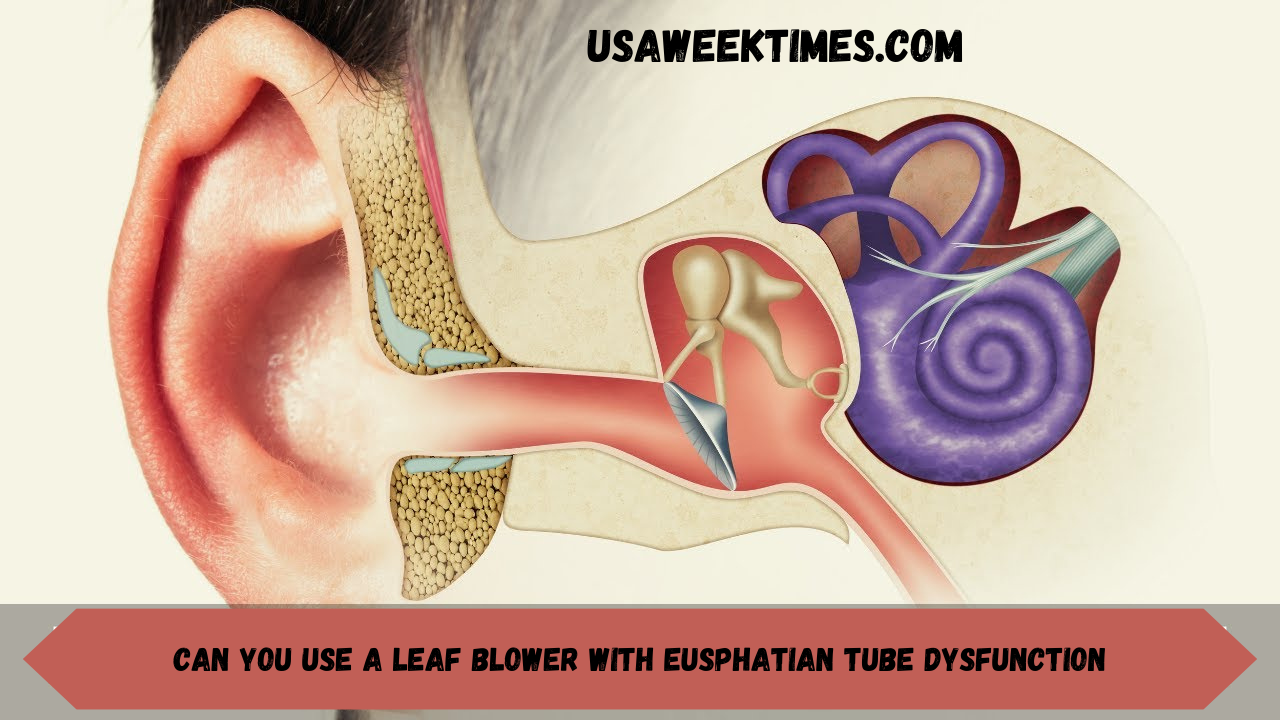Can You Use a Leaf Blower with eusphatian Tube Dysfunction? Understanding the Risks and Precautions 2025
Can You Use a Leaf Blower with Eusphatian Tube Dysfunction? For numerous mortgage holders, a leaf blower is vital for rapidly clearing yards and carports of clears out and flotsam and jetsam. On the off chance you’re pondering, Can You Employ a Leaf Blower with Sulphation Tube Brokenness? It’s critical to understand dangers and take suitable safeguards. This article investigates what sulphation tube brokenness (frequently called Eustachian tube brokenness) is, how uproarious gear like leaf blowers might influence your ears, and viable steps to keep yourself secure.
Understanding Eusphatian Tube Brokenness
Eusphatian tube brokenness may be a condition where the Eustachian tubes—small paths that interface your center ear to the back of your nose—do not work legitimately. These tubes offer assistance in equalizing pressure and depleting liquid from the center ear. When they glitch, you’ll encounter:
- A feeling of completion or weight within the ears
- Torment or discomfort, particularly amid changes in height or with introduction to boisterous clamors
- Periodic hearing challenges or ringing within the ears
For those overseeing this condition, any extra push or strain on the ears, such as introduction to the boisterous commotion, can likely have an effect. Can You Use a Leaf Blower with Sulphation Tube Dysfunction?
The Affect of Leaf Blowers on Ear Wellbeing
Leaf blowers, particularly gas-powered models, can deliver clamor levels ranging from 90 to 110 decibels. Such tall decibel levels can be hurtful indeed to people with ordinarily working ears. When inquiring, Can You Utilize a Leaf Blower with sulphation Tube Brokenness, consider the taking after variables:
Noise Exposure and Ear Sensitivity
- Tall Decibel Levels: Drawn out presentation to boisterous clamor can bother the Eustachian tubes encourage, possibly driving to expanded Can You Use a Leaf Blower with sulphation Tube Dysfunction inconvenience or indeed transitory hearing misfortune.
- Vibration and Weight Changes: The severe vibrations created by a leaf blower might also contribute to weight awkwardness within the ear, compounding indications.
Person Changeability
- Seriousness: Not everybody with sulphation tube brokenness encounters the same level of affectability. A few might discover that brief bursts of presentation cause negligible inconvenience, whereas others may be involved in noteworthy torment or decline of their indications.
- Preexisting Conditions: On the off chance of a history of ear diseases or other sound-related issues, the effect of a loud Can You Use a Leaf Blower with sulphation Tube Dysfunction commotion may be more articulated.
Safety Measures to Require When Employing a Leaf Blower
If you wish to utilize a leaf blower despite having sulphation tube brokenness, there are a few safeguards you’ll be able to take to play down the chance to your ears:
Utilize Hearing Security
- Earplugs or Noise-Canceling Earphones: Wearing high-quality earplugs or noise-canceling earphones can decrease the decibel level of your ears.
- Custom-Fit Choices: Custom-fit ear security may offer upgraded consolation and security for incredibly delicate ears.
Restrain Introduction Time
- Brief Bursts: Rather than utilizing the leaf, Can You Use a Leaf Blower with a sulphation Tube Dysfunction blower for amplified periods? Attempt to complete your errand in brief bursts to constrain nonstop introduction.
- Breaks: Deliver your ears standard breaks amid drawn-out utilize to permit them to recoup from the clamor introduction.
Keep up a Secure Separate
- Work at a Separate: On the off chance that it is conceivable, work the leaf blower from a somewhat greater distance to decrease the commotion that hits your ears.
- Indirect Use: Consider having someone else handle the tool if your symptoms are particularly severe.
Frequently Screen Your Side Effects
- Self-Assessment: Keep track of any changes in ear inconvenience or hearing. Take note of compounding indications after employing a leaf blower. It can be wise to maintain a strategic distance from utilizing it once more or allude to”>to allude together with your healthcare supplier.
- Restorative Interview: Can you always use a leaf blower with eusphatian tube dysfunction? Talk about your condition with an ENT master who can give personalized exhortation and may recommend extra defensive measures.
Choices for Employing a Leaf Blower
In case you’re concerned about the dangers related to commotion presentation and are habitually vexed by sulphation tube brokenness, you might consider these choices:
Electric or Battery-Powered Leaf Blowers
- Calmer Operation: Numerous electric or battery-powered leaf blowers work at lower decibel levels than their gas-powered partners.
- Decreased Vibration: These models frequently create less vibration, possibly reducing the effect on your ears.
Manual Raking
- Traditional Methods: While more labor-intensive, manual raking completely avoids the issue of loud noise exposure and can be a good alternative if your yard isn’t huge.
- Exercise Benefit: Manual raking provides a good physical workout while allowing you to work at your own pace without risking further ear irritation.
Hiring Professional Services
- Professional Yard Care: If using a leaf blower poses a significant risk, consider hiring professional yard care services that can manage the task safely with proper equipment and expertise.
When to Seek Medical Advice
Your health is paramount, and while Can You Use a Leaf Blower with Sulphation Tube Dysfunction, this article offers general guidelines; it’s not a substitute for professional medical advice. If you experience any of the following after exposure to loud noise, seek advice from a healthcare professional:
- Persistent ear pain or discomfort
- Noticeable hearing loss or ringing in your ears
- Increased frequency of ear infections or other related symptoms
Conclusion: Balancing Yard Work and Ear Health
The question, Can You Use a Leaf Blower with Sulphation Tube Dysfunction, doesn’t have a one-size-fits-all answer. While many individuals may safely use a leaf blower by taking appropriate precautions, those with more severe symptoms should be particularly cautious.
By using protective gear, limiting exposure, and considering quieter alternatives, you can manage your yard work while minimizing the risk of exacerbating your condition. Remember, it’s always best to consult a healthcare provider to tailor these recommendations to your needs.
Taking care of your ears is as important as keeping Can You Use a Leaf Blower with Sulphation Tube Dysfunctionyour yard clean, so approach the task mindfully and prioritize your long-term health. Stay safe and take the necessary steps to protect your hearing while enjoying the benefits of a well-maintained outdoor space.




